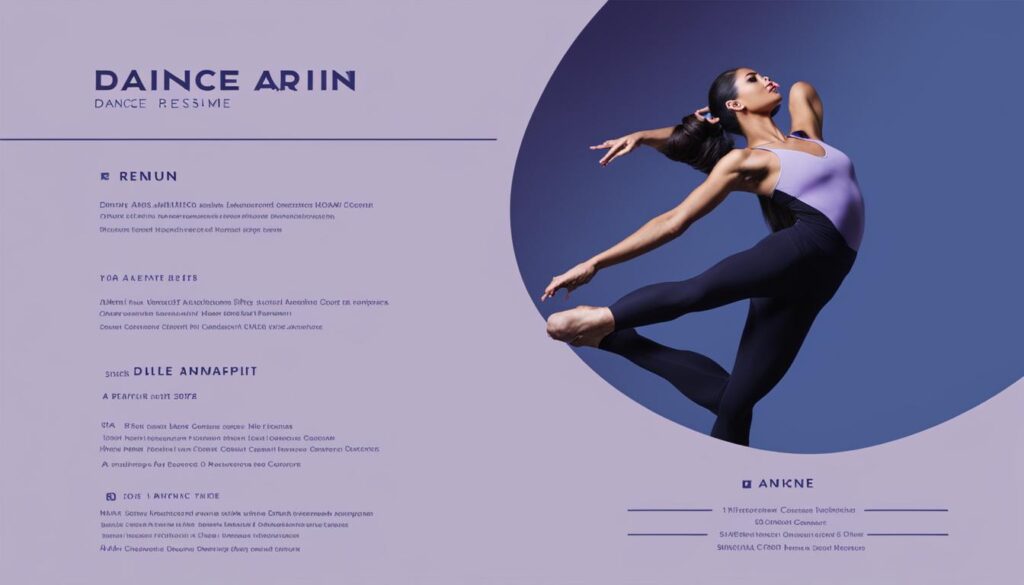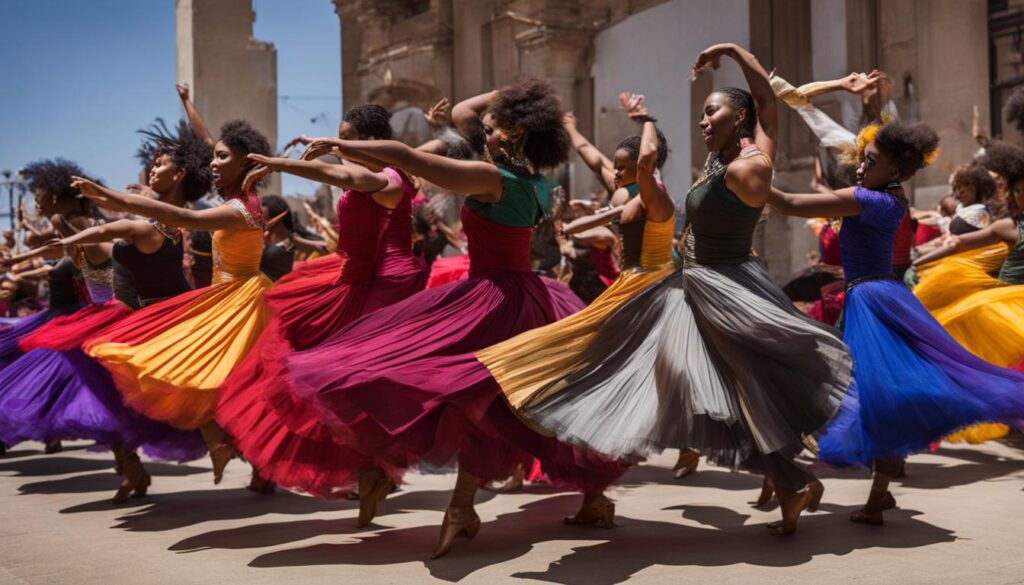A performing arts resume is a crucial tool for anyone in the industry. It highlights your skills, experiences, and physical characteristics that make you stand out as a performer. While similar to a professional resume, a performing arts resume has some unique aspects to consider.
It should include personal information such as height, weight, hair color, and build. The format of a performing arts resume is often broken into columns and kept to a page in length. It typically includes sections on education/training, performing experience, related work experience, union membership, awards/distinctions, and special skills.
When writing a performing arts resume, be specific and focus on one discipline per resume. If you have multiple talents, create separate resumes for each title. Remember to tailor your resume to the job you’re applying for and highlight the most relevant accomplishments and skills.
Learn How to Write a Performing Arts Resume
- Include personal information such as height, weight, hair color, and build in your performing arts resume.
- Format your resume into columns and keep it to one page in length.
- Include sections on education/training, performing experience, related work experience, union membership, awards/distinctions, and special skills.
- Create separate resumes for each discipline you specialize in.
- Tailor your resume to the job you’re applying for and highlight the most relevant accomplishments and skills.
Resume Format and Structure for Performing Artists
When creating a performing arts resume, it’s important to choose a format and structure that will effectively showcase your skills and experiences. The performing arts industry is highly competitive, so a well-organized and visually appealing resume can make you stand out from the crowd. Here are some tips to help you create a standout performing arts resume:
1. Keep it Concise and Organized
Keep your resume to one page, as lengthy resumes can be overwhelming for casting directors and hiring managers. Consider using columns to clearly organize the different sections of your resume, such as education/training, performing experience, related work experience, union membership, awards/distinctions, and special skills.
2. Highlight Your Accomplishments
Use concise bullet points to highlight your accomplishments in each role. Be specific about the roles you have performed and the projects you have worked on. Include information about the productions you have been a part of, the theaters or organizations where you performed, and any notable achievements or awards you have received.
3. Include a Professional Headshot
At the top of your resume, include a professional headshot that accurately represents your appearance. This can help casting directors and hiring managers remember you and visualize you in the roles you are applying for. Make sure your headshot is of high quality and reflects the professional image you want to portray. Here is an example of a professional headshot:
4. Tailor Your Resume to the Job
Customize your resume for each job application by emphasizing the most relevant experiences and skills. Research the company or production you are applying to and tailor your resume accordingly. Highlight experiences that showcase your abilities in the specific genre or style they are looking for. This can help you demonstrate your suitability for the role and increase your chances of getting selected for an audition or interview.
5. Consider Using a Professional Template
If you’re unsure about the layout and design of your resume, consider using a professional performing arts resume template. There are many templates available online that can provide you with a well-structured format and design. These templates often include sections for each relevant category and offer guidance on what information to include.
By following these guidelines and considering the resume examples for performing arts professionals, you can create a performing arts resume that effectively showcases your skills and experiences. Remember to continually update and refine your resume as you gain more experience and accomplishments in the industry.
Highlighting Your Experience in a Performing Arts Resume
The experience section is one of the most critical parts of a performing arts resume. It serves as a platform to showcase your skills, accomplishments, and the breadth of your experience as a performer. To effectively highlight your experience in your resume, follow these resume writing tips for performers:
- Showcase your skills: In this section, you have the opportunity to showcase your talents and skills as a performer. List your performing experience in reverse-chronological order, starting with your most recent role. Include the name of the production, your role, and the theater or organization where it took place.
- Focus on specific details: Use action verbs and specific details to describe your experience in each role. Highlight your accomplishments and the impact you made in those performances. If you have received any awards or recognition for your work, make sure to mention them as well.
- Tailor to the job: When writing the experience section, tailor it to the job you are applying for. Focus on the roles and performances that are most relevant to the position you are seeking. This will show potential employers that you have the specific skills and experience they are looking for.
By showcasing your skills effectively in the experience section of your performing arts resume, you can make a strong impression on casting directors and increase your chances of landing auditions or opportunities in the industry.
Education and Training in a Performing Arts Resume
When crafting a compelling performing arts resume, it’s important to showcase your education and training. This section allows you to demonstrate your formal education and any specialized training you have received to enhance your skills as a performing artist. Here are some resume writing guidelines for actors and performers:
Include Relevant Information
When listing your education and training, be sure to include the name of the institution, its location, the degree or program you have pursued, and the anticipated or completion date. This provides important context for potential employers or casting directors. Additionally, include any notable workshops or masterclasses you have attended with industry professionals.
Highlight Awards and Honors
If you have received any awards or honors during your educational journey, make sure to emphasize them in this section. This could include scholarships, grants, or recognition for outstanding achievements in your performing arts studies. Highlighting these accolades can help you stand out from other applicants.
Showcase Relevant Coursework and Projects
Use this section to highlight any relevant coursework or projects that demonstrate your skills and knowledge in the performing arts field. For example, you could mention specific classes or projects that allowed you to develop skills such as acting, singing, dancing, or stagecraft. Including this information provides evidence of your dedication and growth as a performing artist.
Remember, the education and training section of your performing arts resume should effectively communicate your qualifications and commitment to the craft. By following these resume writing guidelines for actors and performers, you can create a compelling resume that captures the attention of potential employers or casting directors.


Demonstrating Special Skills in a Performing Arts Resume
In addition to your performing experience, it’s important to showcase your special skills in a performing arts resume. These key elements can help craft an impressive performing arts resume that stands out from the competition.
- Showcasing Skills: A dedicated section in your performing arts resume should highlight the special skills that make you a versatile performer. Include skills such as different dance styles, vocal range, musical instrument proficiency, accents/dialects, stage combat training, or any other unique talents that are relevant to the job.
- Be Specific and Provide Examples: It’s crucial to be specific about your special skills. Rather than simply listing them, provide examples or certifications to support your claims. For instance, if you have expertise in a particular dance style, mention the number of years of training or any notable performances related to that style.
- Highlight Relevance: Tailor your special skills section to the job you’re applying for. Focus on the skills that are most relevant to the specific position or production. This will demonstrate your understanding of the requirements and show your suitability for the role.
By showcasing your skills on a performing arts resume and crafting an impressive document, you can demonstrate your versatility as a performer and increase your chances of landing auditions or casting opportunities. As you compile your performing arts resume, remember to prioritize the key elements that will capture the attention of industry professionals.
Including a Professional Headshot in a Performing Arts Resume
A professional headshot is an essential component of a performing arts resume. When creating your resume, be sure to include a high-quality, recent photograph of yourself at the top of the page. The headshot should clearly show your face and make it easy for casting directors and agents to recognize you.
Include a single headshot on the same page as your contact information. Place it in a prominent position where it can be easily seen. Remember, first impressions matter, and a well-presented headshot can grab the attention of industry professionals.
If you have performance photos that showcase your skills or versatility, you can include them as separate attachments or in a separate portfolio. However, be cautious not to overload your resume with too many visuals, as this may distract from the essential information.
Save additional visual materials, such as performance photos, for specific requests or when an employer has expressed interest in seeing your portfolio. This way, you can provide them with a comprehensive view of your talents and abilities.


Additional Tips for Crafting a Standout Performing Arts Resume
To create a winning performing arts resume, it’s important to employ effective resume strategies that will help you stand out from the competition. Here are some valuable tips to consider:
- Tailor your resume: Customize your resume for each job application by highlighting your most relevant experiences and skills. Research the specific requirements of the role and make sure to emphasize the qualifications that align with the job.
- Showcase impressive accomplishments: Be selective when choosing the accomplishments to include in your resume. Highlight your most notable achievements that demonstrate your skills and expertise in the performing arts. This will grab the attention of potential employers and make your resume memorable.
- Avoid overcrowding: Prioritize readability by avoiding cluttering your resume with too much information. Keep it concise and organized, using a clean and professional font, formatting, and layout. This will make it easier for employers to skim through your resume and find the key details.
- Proofread carefully: Take the time to carefully proofread your resume to ensure there are no spelling or grammatical errors. Mistakes can give a negative impression and harm your chances of being considered for a role. It’s also helpful to have someone else review your resume for any overlooked errors.
- Be honest and truthful: It’s essential to be truthful and accurate in presenting your information. Falsifying any details on your resume can have serious consequences for your career. Employers value honesty and integrity, so always provide genuine and reliable information.
- Seek feedback: To ensure that your performing arts resume effectively represents your talents and experiences, seek feedback from industry professionals or trusted colleagues. They can provide valuable insights and suggestions to further enhance your resume.
By following these effective resume strategies, you can create a standout performing arts resume that showcases your unique skills and experiences, increasing your chances of landing that dream role.
Conclusion
Crafting an effective performing arts resume is crucial for actors seeking success in the industry. By following the resume writing guidelines and best practices provided in this guide, you can create a standout resume that effectively showcases your skills and experiences.
Remember to tailor your resume to each job application, highlighting your most relevant accomplishments and skills. Be sure to present yourself professionally throughout the document, using a clean and readable format. Utilize a professional headshot that accurately represents your appearance and includes a high-quality photograph.
With a well-crafted performing arts resume, you can greatly increase your chances of landing auditions and casting opportunities. By demonstrating your talents and experience in a powerful and concise manner, you’ll make a lasting impression on industry professionals. Best of luck with your resume writing journey!
FAQ
How do I write a performing arts resume?
When writing a performing arts resume, be specific and focus on one discipline per resume. Tailor your resume to the job you’re applying for and highlight the most relevant accomplishments and skills.
What is the format and structure of a performing arts resume?
A performing arts resume is often broken into columns and kept to a page in length. It typically includes sections on education/training, performing experience, related work experience, union membership, awards/distinctions, and special skills.
How can I highlight my experience in a performing arts resume?
List your performing experience in reverse-chronological order, starting with the most recent role. Use action verbs and specific details to showcase your skills and accomplishments in each role. Tailor your experience section to the job you’re applying for and focus on the roles that are most relevant.
What should I include in the education and training section of a performing arts resume?
Showcase your formal education and any specialized training you have received. Emphasize any awards or honors you have received during your educational journey. Highlight any relevant coursework or projects that demonstrate your skills and knowledge in the performing arts field.
How do I demonstrate my special skills in a performing arts resume?
Include a section that lists skills such as dance styles, vocal range, musical instruments, accents/dialects, stage combat training, or any other unique talents that are relevant to the job. Be specific and provide examples or certifications to support your claims.
Should I include a professional headshot in my performing arts resume?
Yes, a professional headshot is an essential component of a performing arts resume. Include a high-quality, recent photograph of yourself at the top of the resume. The headshot should clearly show your face and be easy to recognize.
What are some additional tips for crafting a standout performing arts resume?
Tailor your resume to each job application by emphasizing the most relevant experiences and skills. Be selective and choose your most impressive accomplishments to include in the resume. Use a clean and professional font, formatting, and layout. Proofread your resume carefully to avoid any spelling or grammatical errors.
What are some best practices for writing a performing arts resume?
Craft a resume that effectively showcases your skills and experiences. Follow the guidelines provided in this guide, be professional in your presentation, and seek feedback from industry professionals or colleagues to ensure that your resume effectively represents your talents and experiences.

